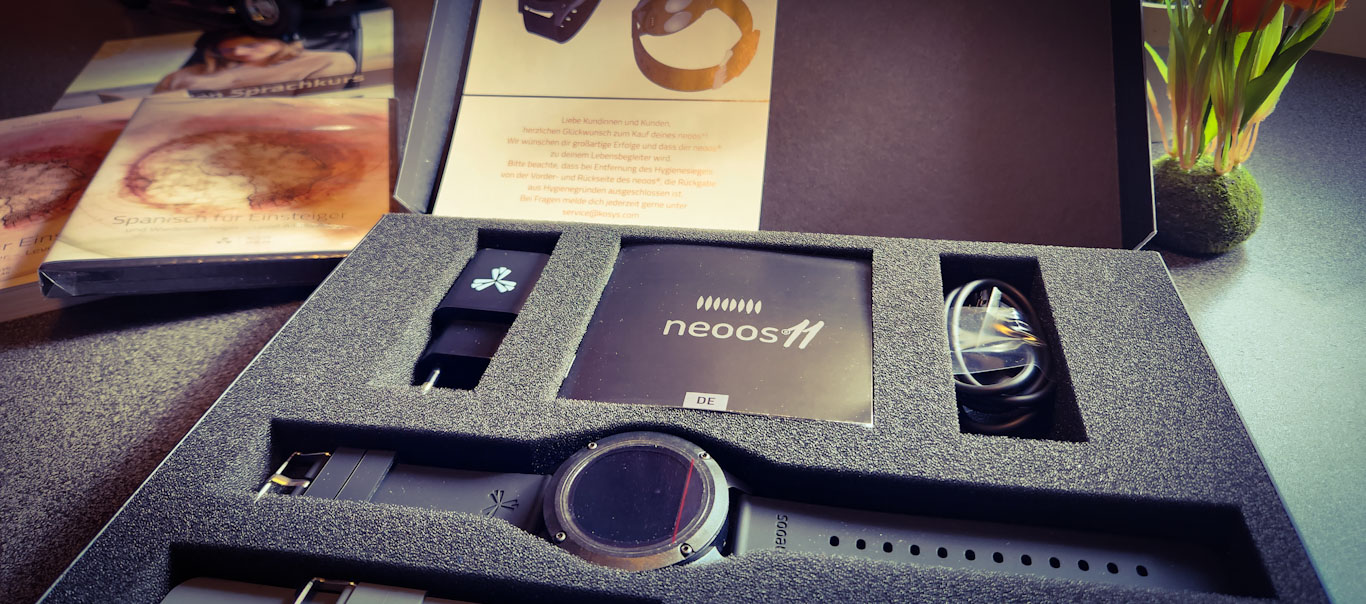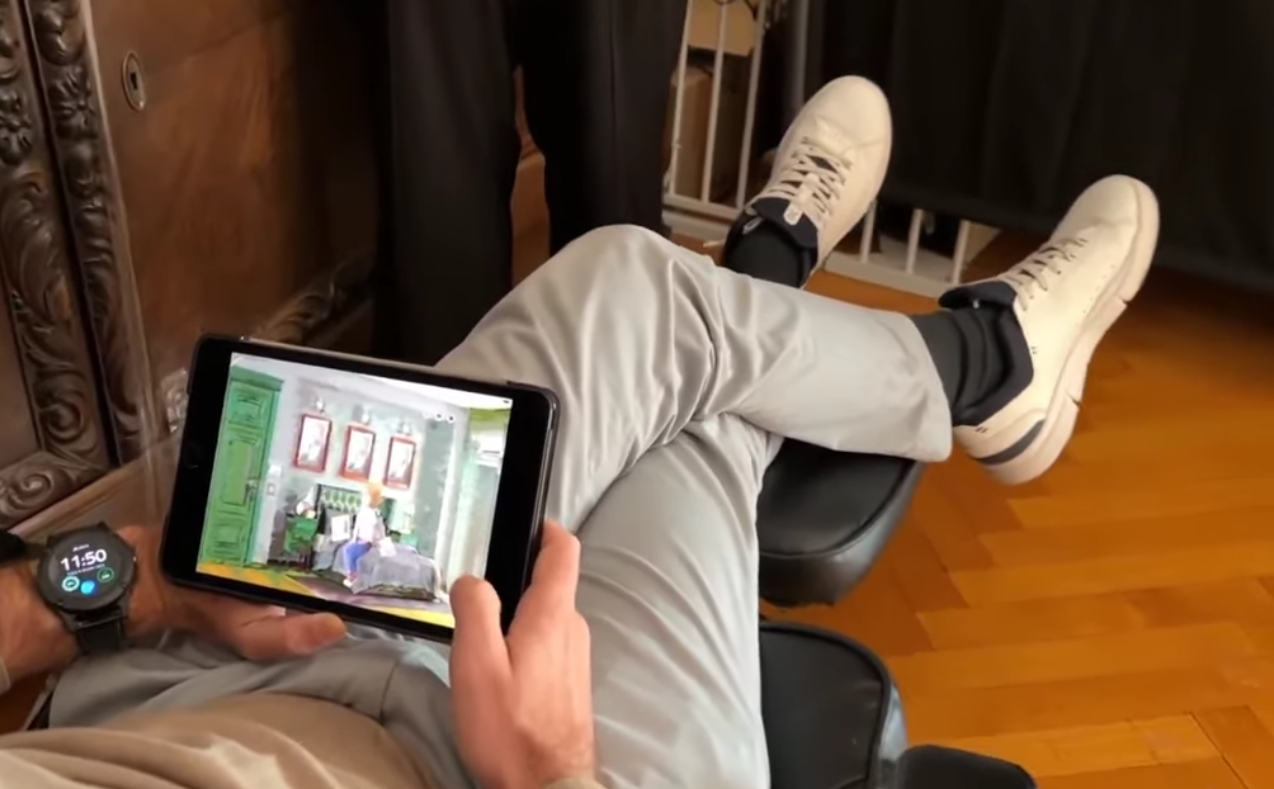Image credit: © Katrin Adam
Are you tired of repetitive cramming and endless memorization like in school? No problem, there are now many alternative approaches. Arguably the best-known and most brain-friendly is the so-called Birkenbihl method, with which a language is internalized quite intuitively. Here, we’ll show you everything you need to know: what the method actually is, how it works exactly, and with which materials and providers it is best used.
Table of Contents:
The Birkenbihl Technique: What Is It Actually?
Named after its founder Vera F. Birkenbihl, this learning concept is, at first glance, the complete opposite of classic learning methods where you endlessly memorize vocabulary and grammar structures. Instead, the Birkenbihl technique builds on how one learns their native language as a baby, which, after all, also works without typical instruction.
Thus, the method is not only intuitive but also brain-friendly, and learning successes and “aha” moments occur after only a short time. You don’t just learn the language; you discover it – for a completely natural, deeper understanding.
Brain-Friendly Learning with Birkenbihl: Here’s How It Works!
Essentially, the Birkenbihl method consists of several stages that build upon each other and target different brain areas and skills. It involves decoding, reading, listening, and actively using the language. Here are the four steps of the Birkenbihl technique, as explained by the founder herself!
Step 1: Decoding – Understanding the Meaning of Words
The first step of the method, so-called decoding, involves a word-for-word translation. This is not a regular translation: You write the respective German word directly under the corresponding word in the foreign language – regardless of German grammar. The whole thing then looks something like this:

This has two advantages. First, of course, you learn what this word means. But much more importantly, and this is where it becomes brain-friendly: The German translation is now in the sentence structure of the foreign language. This allows our brain to intuitively grasp how sentences are constructed in this language. For example, in our language, the verb is in the second position in the sentence, whereas in many other languages it is at the end of the sentence. This and many other rules and peculiarities can be discovered and understood this way, without actively having to learn them. Gone are the days of endless verb forms and tense tables!
talkREAL Tip! We at talkREAL are big fans of the Birkenbihl method, and so we have further refined the first step of decoding: transREAL is a precise guide on how you should proceed with decoding!
When you then read this word-for-word translation, you immediately get a first feel for the language, in a very natural and unconscious way. And this is exactly the entry point, the access, we need to a new learning language. Because this first step works with any language, no matter how different it is from ours.
Step 2: Active Listening
This second step is about actively listening to the language and concentrating on the decoding. So, you hear the word in the foreign language and simultaneously read the German translation. For example, if the Spanish speaker says “mesa,” we simultaneously read the word “Tisch” (table). Every good Birkenbihl language course therefore provides, along with the text material, an authentic audio recording of the text.

‒ Language Course Discounts ‒
Find the best discounts and exclusive coupons for top
language courses here!
+ + + Limited-Time Deals +++ Some Offers Expiring Soon +++ Don’t Miss Out! + + +
This way, our brain makes a direct connection from the foreign language and its sound to the corresponding German word. We don’t need to hear the latter, as we already know the correct pronunciation. To make this step more effective, it is useful to pause as often as necessary and repeat the (new) word in your mind. You don’t have to say it out loud, but you can, of course, if the opportunity arises. However, a mental “echo” is sufficient at this point.
talkREAL Tip! Of course, we also have a bit more information on this step. The same applies to the upcoming Step 03 Passive Listening. If you need additional details, feel free to check out the article “transREAL and then?“.
The goal of this step is to have to press pause less often with each subsequent listening, until you can eventually understand the entire text at a normal speaking speed. This not only trains listening comprehension, but the words are also directly embedded in a meaningful sentence context – this is significantly more brain-friendly than cramming individual vocabulary fragments. (More on this in the article on Brain Research and Vocabulary Learning)
Step 3: Passive Listening
Step three of the Birkenbihl method can definitely be integrated into any daily routine – because here, everything revolves around passively listening to the foreign language. You don’t concentrate on the audio file but do a completely different activity at the same time. It doesn’t matter whether you’re cooking, driving a car, or playing board games – the main thing is that listening happens unconsciously. Above all, it’s important to engage with the language as much as possible and let the audio files play in the background.
This way, our brain gets used to the sound of the foreign language. This is not only beneficial for understanding, but correct pronunciation also becomes more natural. And generally, we want to be able to speak a language, not just understand it. Additionally, there will be small “aha” moments in some quiet instances: You unconsciously pick up a word or a sentence that you can understand quite intuitively, and suddenly you realize how much using the Birkenbihl technique pays off.

talkREAL Tip! If you can’t listen to the foreign language aloud on the side, then the neoos from KOSYS is an exciting alternative, as it enables listening through the skin. This sounds strange at first, but it works, as our neoos experience report shows.
Step 4: Active Use of the Language
Vera F. Birkenbihl leaves the final step of the learning method open to individual design and only gives a few tips. Basically, this step is about actively practicing the use of the language through various learning activities. Ms. Birkenbihl recommends, for example, the so-called “Chorus Method.” Here, you listen to the audio file (quietly) and speak along loudly with what the native speakers say in the recording. This is beneficial for avoiding an accent – unlike in language classes, where you mostly listen to the mistakes and accents of your fellow students.

Besides the Chorus Method, there are a multitude of other activities that you can design according to your own interests. Do you like to cook? Why not try a recipe in the foreign language or translate your favorite German recipe with the vocabulary you’ve learned. Do you like to keep a diary? Why not write in Spanish, Vietnamese, Farsi, etc., once or twice a week. Do you enjoy interacting with others? A language tandem, both written and spoken, helps you directly with application and pronunciation. There are numerous ways to apply the foreign language – the main thing is to engage with it regularly and use authentic sources. By the way, here are 12 more language activities for your everyday learning.
The Pros and Cons of the Birkenbihl Method
It is often said that no language learning method is perfect – each has its pros and cons. What are the advantages of the Birkenbihl technique, and where might there still be room for improvement? Could there perhaps be an ideal learning method after all?
The Advantages of Birkenbihl
Probably the most obvious advantage of the Birkenbihl method: Due to brain-friendly learning, endless, repetitive cramming is no longer necessary. With a little active effort and some passive learning, our brain gets used to the foreign language in a completely natural way. Let’s look at the advantages in detail:
- No dry verb forms and endless tables
- No boring memorization
- Tedious grammar cramming is eliminated
- Learning accent-free pronunciation thanks to authentic native speaker recordings
- Passive learning fits into any daily routine
- Active application can be freely linked with own interests
- Intuitive discovery of the language and regular “aha” moments
- Typical errors in translating idioms and colloquial language are avoided through word-for-word understanding
The method according to Vera F. Birkenbihl brings a whole range of advantages, both through the learning method itself and by omitting useless and non-brain-friendly components of classic learning methods. Because, hand on heart, how much of your school French, English, or Spanish can you still use? This approach does it better by providing a brain-friendly method that can be individually adapted and refined.

‒ The Best Language Course of 2025 ‒
We’ve tested dozens of language courses…
But only ONE takes the #1 spot!
Maria, one of our readers, described the icing on the cake best: “The language just came out of me correctly!” This is exactly what happened to her when she got off the plane in Italy after learning for 5 months beforehand with the Birkenbihl method and our transREAL refinement. And that sums it up best. Because due to the brain-friendly approach, the right words simply come to us when speaking; they are just there. No more major thinking or awkward searching for the right word!
Disadvantages and Problems of the Birkenbihl Method
No learning method is 100% perfect for everyone. But there are methods that come very close – and Birkenbihl is one of them. Nevertheless, there are some hurdles that one should be aware of before starting to learn:
- Mental adjustment: Moving away from familiar learning methods, such as classic approaches like in school
- No immediate results: The method requires patience and trust
- Possible uncertainty during initial use
- Languages with foreign alphabets require (initially) an extra step
- No gamification – intrinsic motivation and linking with interests are necessary
One thing is very clear here. These initial hurdles are just that: initial. Points one to three are not a permanent problem with an adjustment phase. At the beginning, you need a little trust, but then small and large successes show up more and more quickly. And if we can confirm one thing: The method works! You can also find more about this in this detailed article, which examines the problems of the Birkenbihl technique in more detail.
At first, it might seem as if languages with foreign alphabets, such as Asian languages, cannot be used with the Birkenbihl method. However, this is incorrect; on the contrary: It works well! It requires, especially at the beginning, a bit more effort and expense, because besides the German translation, you also have to transcribe the unfamiliar characters into a phonetic script. This is more time-consuming, but in the end, you want to be able to read and write the language, not just speak it.
I myself used the method according to Vera F. Birkenbihl for learning Japanese and Korean and only had an initial extra effort, but no problems. The whole thing looked something like this:

The last point is a disadvantage at first glance, but it can also be easily compensated for. Anyone who links the learning process with their own interests and hobbies, especially in the third and fourth steps of the method, has often already created sufficient motivation for themselves. For everyone else, there are fortunately providers who offer “ready-made” Birkenbihl language courses that provide motivation.
Using the Birkenbihl Method Independently: Here’s How!
All the apps mentioned above have their own advantages and special features, and therefore we can recommend them all. Nevertheless, not every language course is suitable for every learner, of course. The Birkenbihl technique, in particular, can be easily modified and individually adapted, and so you can also learn with it independently. The only thing you need are suitable materials. The big advantage of decoding yourself is that the “aha” moments are much greater.
With Your Own Content to Your Desired Language
The Birkenbihl method is initially an adjustment from other language learning paths, but generally a simple method that can be well implemented for any language and a multitude of contents. You can’t find learning materials in your language that interest you, or are you generally learning a niche language that many Birkenbihl language courses don’t cover? No problem at all. All you need is a voiced text and a reliable dictionary.
The voiced text can also be something quite “mundane”: Why not translate your favorite song (in the target language) or an interesting film scene that has stuck in your memory? These are two examples of texts that have been voiced quite naturally. But there are other examples: How about an interesting TED Talk, a podcast with a transcript, or perhaps an audiobook for which you also have the text?

‒ Language Course Discounts ‒
Find the best discounts and exclusive coupons for top
language courses here!
+ + + Limited-Time Deals +++ Some Offers Expiring Soon +++ Don’t Miss Out! + + +
As you can see, it doesn’t always have to be learning texts – learning with your own content is more obvious than you might think. Personally, it helped me a lot to use song lyrics and series when learning Korean. This not only gave me a deeper understanding of the language that goes far beyond the usually freely translated subtitles – I also got a little closer to the culture. Not to mention the increased fun factor. Just give it a try!
talkREAL Tip! Christian likes to use the learning crime novels from Circon. Since these do not come with an audio file, he simply has the texts recorded by his language teacher, whom he found on Preply, and sent via WhatsApp. Content creation with the help of artificial intelligence like ChatGPT is also very promising.
Furthermore, there is another practical way to ensure you don’t run out of learning content too quickly. Because some language courses that are not directly based on Birkenbihl can still be used for the learning method with small modifications or additions. And here’s how:
LingQ – The Self-Study System with a Great Community
The provider LingQ is not a classic, guided language course. It is a self-study course that provides its users with a multitude of high-quality materials in various subject areas. These are text files that are also authentically voiced. While LingQ itself does not rely on Birkenbihl, the content is wonderfully suited for independent learning. If you transcribe yourself, you’re already halfway there. And that’s not all: With LingQ, you can also upload your own materials and use them in the provider’s format.
Additionally, LingQ has some interesting extra features: There are regular learning challenges and an active, international community with which you can exchange ideas and network if needed. Text corrections and language lessons are even offered – ideal for step four of the Birkenbihl method. Moreover, the basic version of LingQ can be used for free, and there is a huge selection of languages and learning levels that is constantly growing. Definitely give it a try!
Conclusion: Intuitive and Brain-Friendly Learning with Birkenbihl
Whether you use a pre-made language course or your very own version of the Birkenbihl method: Brain-friendly learning is pre-programmed here! The four-step method initially requires a little time and trust, as it differs greatly from cramming in school – but for that, you learn your target language intuitively and without endless memorization.
The combination of active and passive learning fits into any daily routine and can even be linked with your own areas of interest. This provides a very natural learning experience and regular “aha” moments. You get a good story for this with FNPLY, Birkenbihl for your pocket is offered by Birlingo, and even a small budget will find something with the Birkenbihl Audio Courses. Additionally, free providers like Jicki or LingQ support the learning process.
But no matter how you ultimately implement the Birkenbihl technique for yourself – it is always a good choice to meet the requirements of your brain. Many courses and resources also offer a free trial phase, so we can recommend everyone to simply give it a try.
Have you already had experiences with Birkenbihl, or are you planning to try the method? Feel free to leave us a comment!